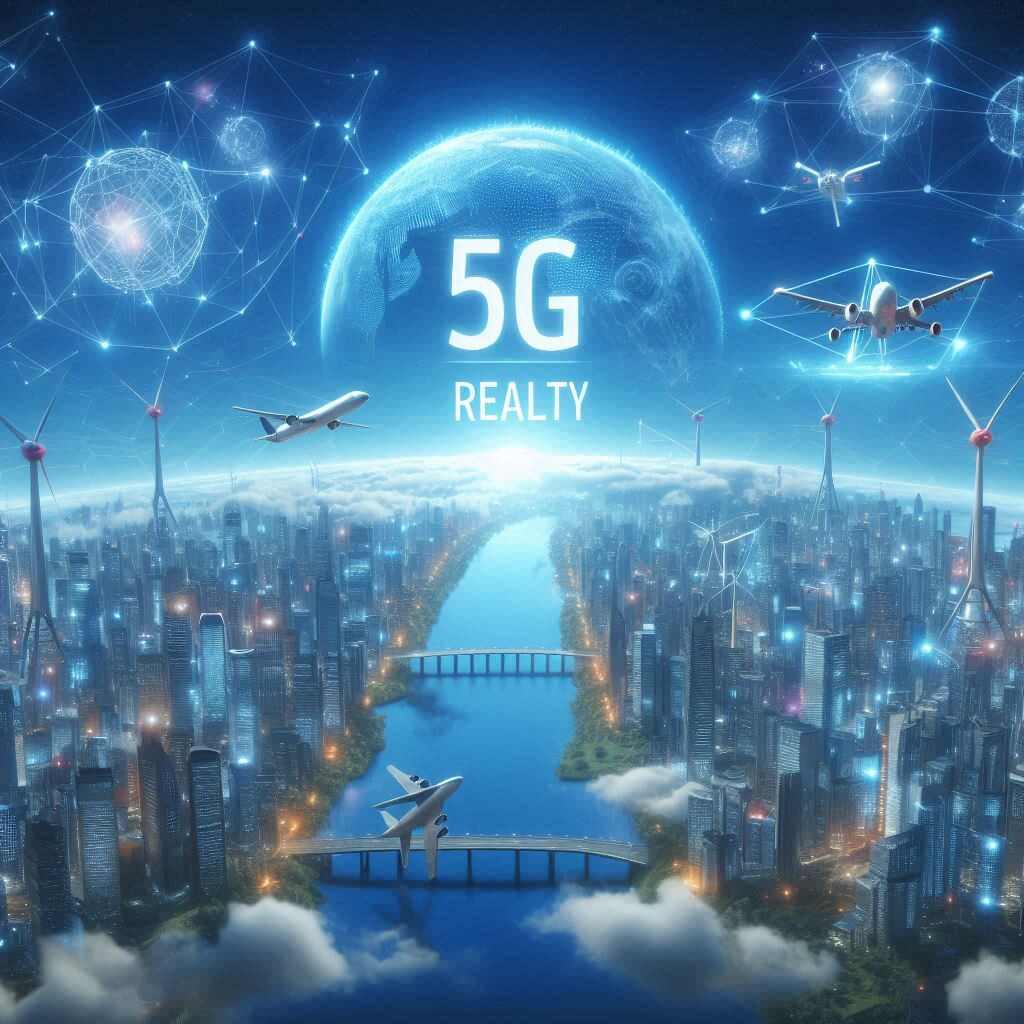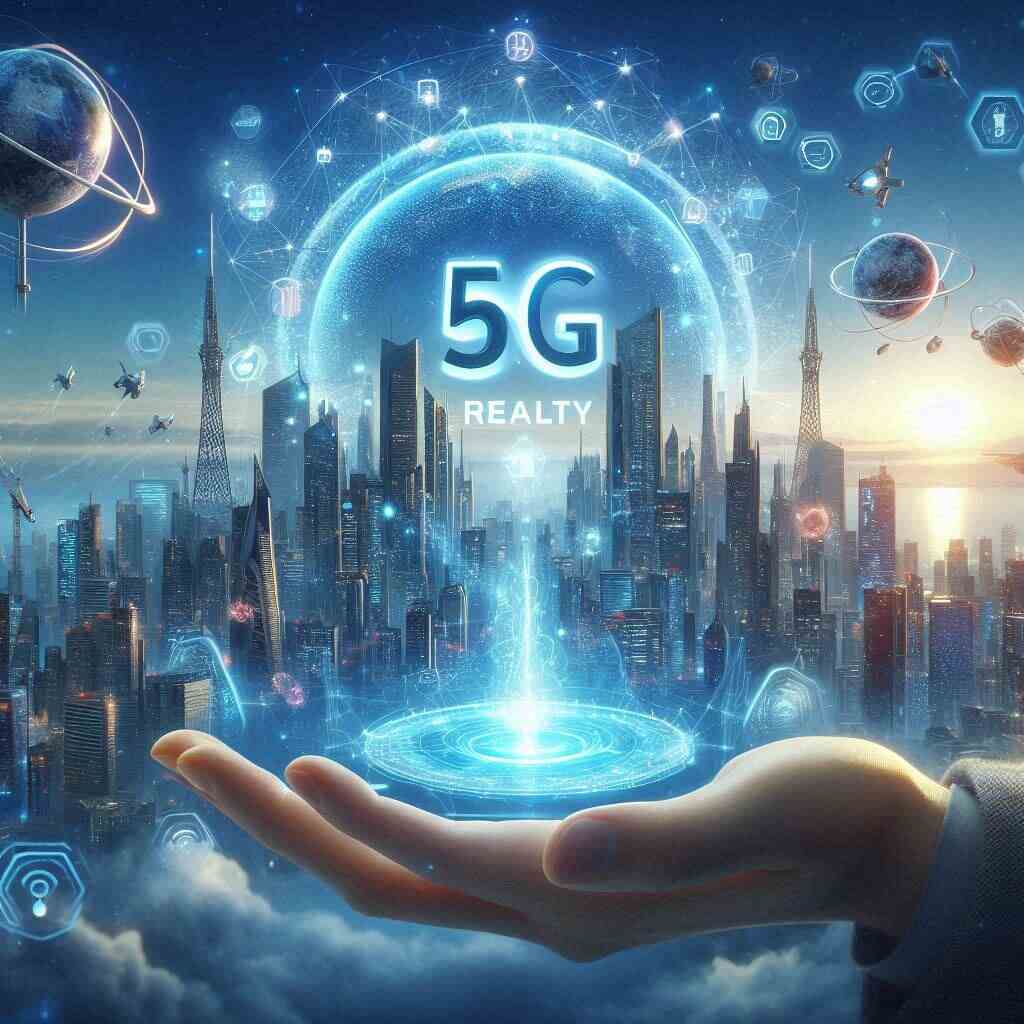5G Reality PPTX: Unlock the Future of Connectivity
Welcome to the future, where downloads take seconds, surgeries happen across borders, and your fridge might just have better internet than your phone did five years ago. Yeah, we’re talking about 5G—the fifth generation of wireless technology that’s supposedly revolutionizing everything. But is that really the case?
If you’ve stumbled across the term “5G Reality PPTX,” chances are you’re either working on a presentation or trying to decode what’s true and what’s just tech hype. Don’t worry—this guide will not only break down 5G reality but also help you craft an engaging PowerPoint (PPTX) to communicate it. So grab your coffee, and let’s dive in.
Introduction to 5G Technology

What Is 5G and Why Does It Matter?
Imagine downloading an entire HD movie in under 10 seconds. That’s 5G power for you. It’s not just a step up from 4G—it’s a leap into real-time connectivity. We’re talking speeds up to 100 times faster than its predecessor and latency (a.k.a. lag) so low, it’s barely noticeable.
But why should you care? Because this isn’t just for nerds or telecom giants—it affects everything from how we work and drive to how we stream Netflix and monitor our health.
Evolution from 1G to 5G: A Quick Recap
| Generation | Key Feature | Year Introduced |
|---|---|---|
| 1G | Analog voice | 1980s |
| 2G | Digital voice/SMS | 1990s |
| 3G | Mobile data | 2000s |
| 4G | Fast internet/video | 2010s |
| 5G | Real-time, IoT | 2020s |
Each generation opened a new door—and 5G kicked that door off its hinges.
5G in Everyday Life: Is It Already Here?
Yes… and no.
While major cities have 5G coverage, the “everywhere” promise is still a work in progress. Some areas are zooming ahead with blazing speeds. Others? Not so much. So while 5G is technically here, its real-world reality is still unfolding.
What “5G Reality PPTX” Really Means

Breaking Down the Phrase: “5G Reality”
The phrase “5G Reality” suggests separating hype from what’s actually happening. Forget the glossy ads with holograms and flying cars. What does 5G actually do right now? That’s what this term is trying to tackle.
The Role of a PPTX (PowerPoint) in Explaining 5G
Let’s be real—nobody wants to read a 30-page white paper on signal processing. But a visual-rich, bullet-pointed, story-driven PowerPoint presentation (PPTX)? Now that’s digestible.
PPTX is the go-to format for:
- Business briefings
- Tech talks
- Educational classes
- Government strategy sessions
Why Presentations Are the Go-To for Understanding Tech Trends
Because they allow context, comparison, and clarity. You can show charts, videos, animations, and most importantly—keep people awake.
Core Features of 5G Technology

Lightning-Fast Speeds (10–100x Faster Than 4G)
Download speeds on 5G networks can exceed 1 Gbps. That’s like downloading a 2GB movie in under 2 seconds. Perfect for:
- High-definition video streaming
- Large file transfers
- Cloud-based apps
Ultra-Low Latency: Real-Time Everything
Latency on 5G can drop to 1 millisecond. Compare that to 4G’s ~30ms. It’s a game-changer for:
- Self-driving cars
- Remote-controlled drones
- Live gaming & VR
Massive Device Connectivity: IoT at Full Scale
5G isn’t just for phones. It’s designed to connect over 1 million devices per square kilometer. That’s critical for:
- Smart homes
- Smart factories
- Smart cities
Real-World 5G Applications
Smart Cities and Autonomous Cars
5G enables traffic lights that talk to each other, cars that brake before you even realize you should, and real-time pollution tracking.
Telemedicine and Remote Surgeries
Doctors can now operate robotic arms in another state—or continent—without delay, thanks to 5G’s low latency.
Gaming and Augmented Reality (AR/VR)
Forget lag and buffering. 5G makes cloud gaming and immersive VR smooth, fast, and ultra-realistic.
The Myths vs. Reality of 5G
“5G Causes Health Problems”—Debunked
Despite conspiracy theories, there is no scientific evidence linking 5G to cancer or other health issues. Regulatory bodies like the WHO and FCC have declared it safe.
“5G Is Just a Slight Upgrade from 4G”
Wrong. 5G is a complete redesign of network architecture. It’s not just faster; it’s smarter, more flexible, and capable of things 4G can’t touch.
“5G Is Available Everywhere”—Not Quite
While carriers advertise national coverage, true 5G (especially mmWave) is still limited to urban cores and major venues.
Building a Winning 5G PPTX Presentation
Key Slides Every 5G Deck Should Have
- Slide 1: The Problem (Slow networks, latency)
- Slide 2: What Is 5G? (Simple definition)
- Slide 3: Benefits (Speed, latency, connectivity)
- Slide 4: Real-World Uses (Industries affected)
- Slide 5: Challenges & Myths
- Slide 6: The Future & Conclusion
Using Charts, Data, and Visuals to Add Impact
Don’t just throw numbers—visualize them. Pie charts, heatmaps, and before/after comparisons are your best friends in a 5G deck.
Tips to Keep It Clear, Fun, and Engaging
- Use bullet points, not paragraphs
- Add relevant images and icons
- Include short videos or GIFs
- Keep slides minimalist and on-brand
Where 5G Stands Globally in 2025
U.S. vs China vs Europe Rollouts
| Region | Coverage | Speed | Leadership |
|---|---|---|---|
| U.S. | Wide, but inconsistent | Moderate | Verizon, AT&T |
| China | Dense urban coverage | Fast | Huawei, ZTE |
| Europe | Balanced | Varies | Ericsson, Nokia |
How Developing Countries Are Adopting 5G
Many are skipping fiber broadband entirely and jumping straight into mobile 5G, especially in:
- Africa
- Southeast Asia
- Latin America
Who’s Leading the 5G Race and Why?
Right now, China leads in infrastructure, the U.S. dominates in innovation, and Europe is catching up with regulatory frameworks.
Challenges Holding Back 5G
Infrastructure Costs and Delays
Laying fiber, building small-cell towers, and upgrading hardware ain’t cheap. Some estimates say $1 trillion+ globally will be spent on 5G by 2030.
Limited Device Compatibility
Older phones won’t support 5G. Even now, many people still use 4G devices because 5G phones are more expensive.
Privacy, Security, and Data Sovereignty
More connected devices = more vulnerabilities. Governments worry about foreign spying, cyberattacks, and lack of control over data.
The Future of 5G and Beyond
What Will 6G Look Like?
We’re talking terahertz frequencies, brain-computer interfaces, and holographic communications. It’s still a decade away—but R&D has already begun.
The Roadmap to a Hyperconnected World
5G is just the foundation. Layer AI, blockchain, and quantum computing on top—and we’re entering a truly intelligent network era.
Should You Care About 5G in 2025?
Absolutely. Whether you’re a gamer, a CEO, or someone who just wants better Zoom calls—5G is changing your life, whether you notice it or not.
Conclusion: Is the 5G Reality Living Up to the Hype?
So, let’s be honest. Is 5G a magical fix-all? No. But is it a massive leap in connectivity that’s already reshaping industries, economies, and daily life? Heck yes.
Creating a strong 5G Reality PPTX isn’t just about listing stats—it’s about telling a compelling story. One that blends hope, hype, and hard truths into a clear, engaging narrative.
And now you’ve got the blueprint to do just that.
FAQs About 5G Reality and PPTX Presentations
1. What does “5G Reality PPTX” actually mean?
It’s a PowerPoint presentation explaining the current state and real-world application of 5G technology.
2. Can I create a 5G PPTX without being a tech expert?
Absolutely! Focus on benefits, use visuals, and explain terms simply. Keep your audience in mind.
3. How fast is 5G compared to 4G?
5G is typically 10x to 100x faster than 4G, depending on the location and network type.
4. Is 5G dangerous to health?
No credible scientific studies have proven health risks from 5G radiation. It’s within safe limits.
5. What industries benefit most from 5G?
Healthcare, automotive, manufacturing, entertainment, and agriculture are all being transformed.
6. Do I need a new phone for 5G?
Yes, only phones with 5G-compatible chipsets can connect to 5G networks.
7. What’s the biggest hurdle for 5G?
Infrastructure costs, limited device support, and policy challenges are major roadblocks.
8. When will 5G be everywhere?
Widespread global adoption is expected by 2027–2028, though major cities already have strong coverage.
9. How do I make my 5G PPTX stand out?
Use short, powerful slides, tell a story, and include data visualizations and real-life examples.
10. Is 6G already in development?
Yes. Research on 6G has started, aiming for deployment around 2030 with even faster, smarter networks.







